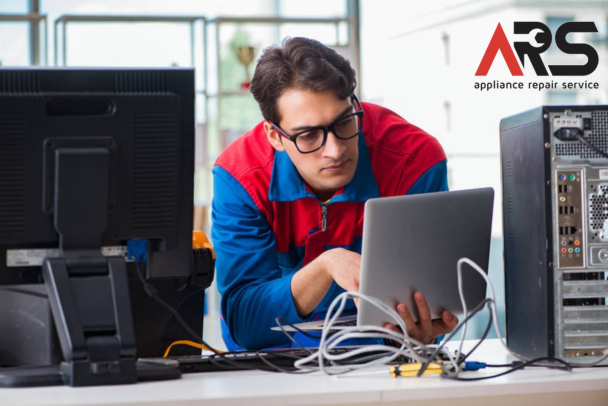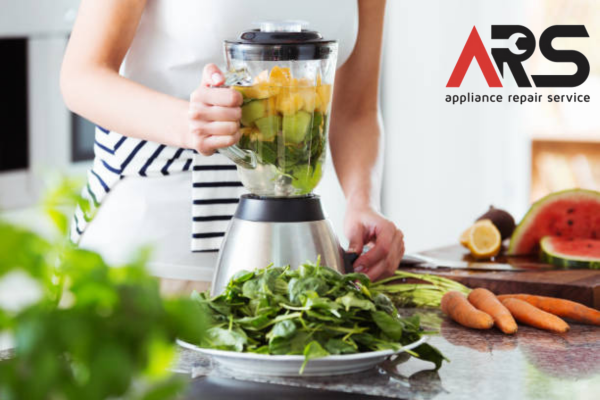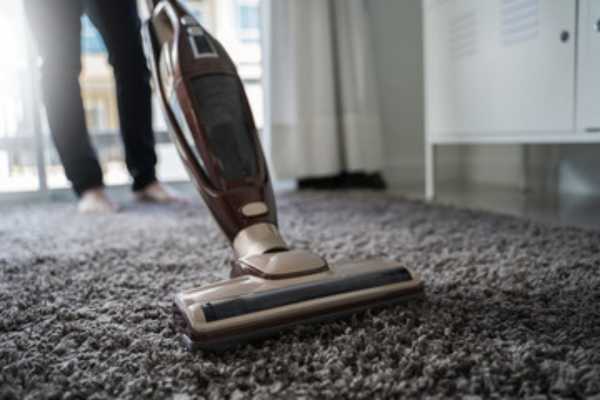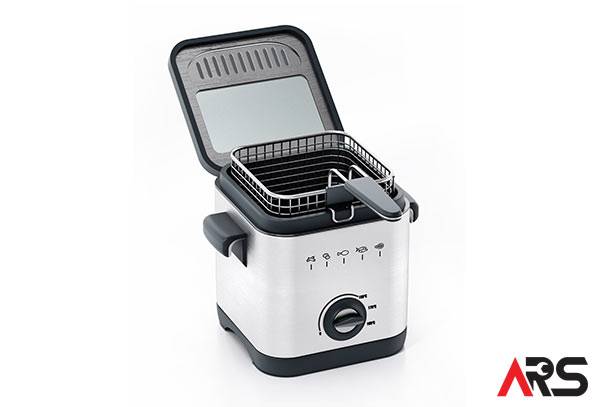
How Air Fryers Work: A Practical Guide for Better Results and Safer Use
The Rise in Popularity of Air Fryers
Air fryers have revolutionized the modern kitchen. Designed to replicate the crispy texture of fried food with significantly less oil, air fryers are now a go-to appliance for health-conscious home cooks. With growing concerns about trans fats and high cholesterol, the air fryer has become a staple in households seeking healthier alternatives without compromising on flavour or crunch.
What Is an Air Fryer?
An air fryer is a countertop convection oven that simulates deep frying without submerging the food in oil. By circulating hot air at high speed, it browns and crisps food using only a small amount of oil or even none at all.
This cooking method drastically reduces fat content, making meals healthier while maintaining the signature taste and texture of traditionally fried foods.
Air fryers are compact convection ovens that circulate hot air around food to create a crisp exterior with little or no added oil. For many meals, this method can cut fat and calories compared with deep frying (air-fried foods can use 70–80% less oil). Below you’ll find clear, evidence-based tips to cook better, reduce energy use, and keep your appliance running safely.
What Is an Air Fryer?
An air fryer is a countertop convection oven. A heating element generates heat while a high-speed fan moves that heat rapidly around your food so it browns and crisps with minimal oil. Compared with deep frying, this approach can reduce overall fat intake (Cleveland Clinic overview).
How Does an Air Fryer Work?
The fan-and-heater assembly drives hot air across the food surface, evaporating moisture quickly and promoting browning. The basket’s perforations allow air to circulate underneath so food cooks on all sides. For even results, avoid overcrowding and shake or rotate halfway through cooking (USDA FSIS guidance).
The Browning Chemistry That Makes Food Taste Great
Maillard reaction
This reaction between proteins and sugars creates the deep, roasted flavours and brown crusts you love. It accelerates as surface temperatures climb and moisture decreases (Maillard reaction basics).
Caramelization
When sugars heat up, they break down and form new flavour compounds and colour. Different sugars caramelize at different points; for example, fructose begins around ~110 °C and sucrose closer to ~160 °C (caramelization temperatures).
Temperature and Timing That Actually Work
Most units offer 80–200 °C with timers up to 60 minutes. Use lower settings for reheating and dehydrating; use higher settings to drive browning at the end of cooking. Preheating is brief on many models, but 2–3 minutes helps crisp frozen foods. Batch cooking improves airflow and doneness (USDA FSIS).
Main Components of an Air Fryer
- Heating element: Provides radiant heat, typically near the top of the cavity.
- High-speed fan: Circulates hot air for even browning.
- Basket or tray: Perforated to maximize airflow around food.
- Crumb/drip tray: Catches crumbs and rendered fat for easier cleaning.
- Controls: Dials or digital interface for time, temperature, and presets.
Safety Measures When Using an Air Fryer
Proper usage of an air fryer not only guarantees better cooking results but also ensures safety in your kitchen.
- Never Submerge Components in Water: Only the basket and drip tray should be washed.
- Avoid Over-Oiling: Excessive oil can cause smoke or fire.
- Handle with Care: The unit can become extremely hot; allow at least 30 minutes to cool.
- Do Not Block Vents: Blocking airflow can affect cooking and damage components.
- Use on a Flat Surface: Place on a stable, heat-resistant surface.
- Give it space: Place on a stable, heat-resistant surface with several inches of clearance so vents are never blocked (air fryer safety tips).
- Clean regularly: Let it cool, then wash the basket and tray in warm, soapy water. Wipe the interior to remove grease that can smoke or ignite (USDA FSIS).
- Use a light mist of oil when needed: Excess oil can smoke and collect under the heater. Avoid aerosol cans that can damage non-stick coatings.
- Do not immerse the main unit: Only removable parts are dishwasher-safe on most models; check your manual.
- Unplug after use: Many safety agencies recommend unplugging small heat-producing appliances when not in use to minimize fire risk and standby draw (unplug small appliances).
If you suspect your air fryer isn’t functioning properly, it’s best to reach out to a local appliance repair expert like ARS for professional assistance.
Safety and Maintenance Essentials
What to Look for When Buying an Air Fryer
1. Time Efficiency
Choose a model with quick preheating times and short cooking cycles. The best air fryers can cook meals in under 20 minutes, ideal for busy schedules.
2. User-Friendly Controls
Opt for a digital interface or intuitive control panel. Presets for common dishes such as fries, chicken, fish, and vegetables are especially helpful for beginners.
3. Temperature Adjustability
A wide temperature range gives more cooking flexibility. Ensure your chosen air fryer supports settings between 80°C and 200°C for everything from reheating leftovers to cooking meat.
4. Health Benefits
Air fryers offer a healthy way to enjoy favourite meals with up to 80% less oil. This not only reduces calorie intake but also helps manage conditions like high cholesterol and hypertension.
5. Capacity and Size
Compact models work for singles or couples, while larger 5–6L models suit families.
6. Easy Maintenance
Look for dishwasher-safe parts and non-stick interiors that are easy to clean. Maintenance plays a key role in the longevity of your appliance.
Is an Air Fryer Worth It?
For most people, the answer is yes. Air fryers are incredibly versatile, they can roast vegetables, bake pastries, reheat leftovers, and even cook frozen foods without thawing. They also use significantly less electricity than full-sized ovens, making them energy-efficient as well.
Whether you’re new to healthy eating or a seasoned home chef, an air fryer is a worthwhile investment for your kitchen.
Need Air Fryer Repair?
If your unit will not power on, overheats, smells like burning plastic, or cooks unevenly despite correct settings, book a professional diagnosis. ARS Appliances Repair Service provides appliance repair in Toronto, the GTA, and across Ontario. We troubleshoot faulty fans, heating elements, control boards, and wiring. Visit ARS Appliances Repair Service to schedule service, or see our Barrie repair page for Simcoe County.
Air Fryer FAQs
How is an air fryer different from a deep fryer?
Air fryers use hot air circulation rather than submerging food in oil, which can lower fat and calorie intake compared with deep frying (health comparison).
Can I cook frozen food without thawing?
Yes. Frozen fries, nuggets, and vegetables cook well. Increase time a few minutes and shake once or twice (USDA FSIS tips).
Do air fryers save energy?
For small portions, using a compact convection appliance can use less energy than preheating a full-size oven. Public energy-saver guidance recommends using small appliances for small meals (energy-saving kitchen tips).
Why does a new air fryer smell like plastic?
A brief “new appliance” odor can occur during first uses as manufacturing residues burn off. Run it empty for 10–15 minutes at a high setting with good ventilation, then cool and clean. If odor persists or you see smoke, stop use and have it inspected.
What foods work best?
Cut vegetables, breaded proteins, wings, salmon, tofu, and reheated leftovers. Use a light oil mist for better colour and texture. Avoid batters that drip through the basket.
How should I clean it?
Unplug, let it cool, then wash the basket and tray. Wipe the interior to remove grease that can smoke. Never immerse the main unit (USDA FSIS cleaning guidance).
How is an air fryer different from a traditional deep fryer?
An air fryer uses hot air circulation to cook food with little to no oil, while a deep fryer submerges food in hot oil. This results in significantly less fat and calories when using an air fryer, making it a healthier alternative.
Can you cook frozen food in an air fryer?
Yes, air fryers are ideal for frozen foods such as fries, chicken nuggets, or vegetables. No need to thaw—just adjust cooking time and temperature accordingly.
Is air-fried food really healthier?
Air-fried food typically uses 70–80% less oil compared to deep frying, reducing overall calorie and fat intake. While not all air-fried foods are inherently healthy, the method is healthier than traditional frying.
What types of food can you cook in an air fryer?
Air fryers are versatile. You can cook French fries, chicken wings, vegetables, fish, and even baked goods like cookies and muffins. Some models support grilling and roasting functions.
Do air fryers use a lot of electricity?
Air fryers are generally energy-efficient. They cook food faster than a conventional oven and often don’t require preheating, using less electricity overall.
How do I clean an air fryer properly?
Let it cool for at least 30 minutes before cleaning. The basket and tray can usually be washed with warm soapy water or in the dishwasher. Never immerse the main unit in water.
Can an air fryer replace a microwave or oven?
Air fryers can supplement but not fully replace a microwave or oven. They excel at crisping and roasting but are less effective for reheating liquids or cooking large meals.
Why does my air fryer smell like plastic when I use it?
A plastic smell is common with new air fryers and usually disappears after a few uses. To minimize it, run the unit empty at 200°C for 10–15 minutes before cooking your first meal.
When should I call for professional air fryer repair?
If your air fryer isn’t turning on, overheating, emitting a burning smell, or cooking unevenly, it’s time to consult a professional. Contact a certified appliance repair service like ARS for safe and lasting fixes.
Final Thoughts: Keep Your Air Fryer Working Like New
Air fryers have become an essential part of healthy home cooking. With rapid hot air circulation, minimal oil use, and fast cooking times, they offer both convenience and nutrition. However, like any appliance, proper usage and timely maintenance are crucial for long-term performance.
If your air fryer is showing signs of wear, not heating properly, making strange noises, or simply not turning on, don’t wait for the problem to worsen. ARS Appliances Repair Service is your trusted partner for small appliance repair in Ontario, specializing in air fryer repairs, diagnostics, and maintenance.
We serve homes across Toronto, the GTA, and throughout Ontario with fast, professional service. Whether it’s a faulty fan, burnt-out heating element, or control board issue, our technicians can help.
Need air fryer repair or want to learn more about your appliance?
📞 Call ARS Appliances Repair Service today or visit our website to book your service appointment. We’re here to make sure your kitchen runs safely, efficiently, and deliciously. Check out our Barrie page for Simcoe Valley related information too!

How Air Fryers Work: A Practical Guide for Better Results and Safer Use
Air fryers have become a go-to appliance for home cooks who want crispy, delicious results with less oil. They’re essentially compact convection ovens: a heating element generates heat and a high-speed fan circulates it around your food, browning and crisping with little or no added oil. Compared with deep frying, this can reduce fat and calories—many air-fried recipes use 70–80% less oil.
How Does an Air Fryer Work?
The fan-and-heater assembly drives hot air across the food surface, evaporating moisture quickly and promoting browning. Perforations in the basket or tray let air circulate underneath so food cooks on all sides. For even results, don’t overcrowd; shake or turn food halfway through (USDA FSIS guidance).
Browning Chemistry That Makes Food Taste Great
Maillard reaction
This reaction between proteins and sugars creates deep, roasted flavours and a brown crust. It accelerates as surface temperatures rise and moisture drops (Maillard basics).
Caramelization
When sugars heat, they break down and form new flavour compounds and colour. Different sugars caramelize at different temps (fructose ~110 °C; sucrose ~160 °C) (caramelization reference).
Temperature & Timing That Actually Work
Most units offer 80–200 °C and timers up to 60 minutes. Use lower settings for reheating/dehydrating; use higher settings to finish with colour and crispness. Preheating is brief on many models, but 2–3 minutes helps with frozen foods. Batch cooking improves airflow and doneness (USDA FSIS).
Main Components of an Air Fryer
- Heating element: Supplies radiant heat (usually near the top).
- High-speed fan: Circulates hot air for even browning.
- Basket or tray: Perforated to maximize airflow around food.
- Crumb/drip tray: Catches crumbs and rendered fat for easier cleaning.
- Controls: Dial or digital interface for time, temperature, and presets.
Safety & Maintenance Essentials
- Give it space: Use a stable, heat-resistant surface with several inches of clearance so vents aren’t blocked (safety tips).
- Light oil only: Excess oil can smoke and collect under the heater. Avoid aerosol cans that damage non-stick coatings.
- Never immerse the main unit: Only the basket/tray are typically dishwasher-safe; check your manual.
- Clean regularly: Let it cool, then wash basket/tray in warm soapy water. Wipe interior grease to prevent smoke (USDA FSIS).
- Unplug after use: Reduces fire risk and standby draw (appliance unplugging advice).
What to Look for When Buying an Air Fryer
1) Time efficiency
Quick preheat and short cook cycles are ideal. Many meals finish in under 20 minutes.
2) User-friendly controls
Clear digital interfaces and presets (fries, chicken, fish, veg) help beginners and speed up routine cooking.
3) Temperature range
Look for 80–200 °C for everything from reheating to finishing meats with colour.
4) Health angle
Air fryers use far less oil than deep fryers, which can help manage calories and fat.
5) Capacity & size
Compact models suit 1–2 people; 5–6 L (or larger) are better for families.
6) Easy maintenance
Dishwasher-safe parts and good non-stick coatings make cleanup fast and extend the appliance’s life.
Is an Air Fryer Worth It?
For most households, yes. Air fryers handle vegetables, breaded proteins, wings, salmon, tofu, pastries, and reheats well. They’re convenient, energy-savvy for small portions, and deliver crisp textures without deep-frying.
Need Air Fryer Repair?
If your unit won’t power on, overheats, smells like burning plastic, or cooks unevenly despite correct settings, book a professional diagnosis. ARS Appliances Repair Service provides appliance repair in Toronto, the GTA, and across Ontario. We troubleshoot faulty fans, heating elements, control boards, and wiring. Visit ARS Appliances Repair Service to schedule service, or see our Barrie repair page for Simcoe County.
Air Fryer FAQs
How is an air fryer different from a deep fryer?
Air fryers use hot air circulation instead of submerging food in oil, which can lower fat and calorie intake (health comparison).
Can I cook frozen food without thawing?
Yes—frozen fries, nuggets, and vegetables cook well. Add a few minutes and shake once or twice (USDA FSIS tips).
Do air fryers save energy?
For small portions, using a compact convection appliance can use less energy than preheating a full-size oven (energy-saving kitchen tips).
Why does a new air fryer smell like plastic?
A short “new appliance” odour can occur as residues burn off. Run it empty 10–15 minutes at a high setting with ventilation, then cool and clean. If odour or smoke persists, stop use and have it inspected.
What foods work best?
Cut vegetables, breaded proteins, wings, salmon, tofu, and reheated leftovers. Use a light oil mist for better colour and texture. Avoid batters that drip through the basket.
How should I clean it?
Unplug, let it cool, then wash the basket and tray. Wipe interior grease to prevent smoke. Never immerse the main unit (USDA cleaning guidance).
Can an air fryer replace a microwave or oven?
It supplements, not replaces. It excels at crisping and roasting but isn’t ideal for liquids or very large meals.
When should I call for professional repair?
If it won’t power on, overheats, emits a burning smell, or cooks unevenly despite correct use, contact a certified appliance repair service like ARS.

How Air Fryers Work: A Practical Guide for Better Results and Safer Use
The Rise in Popularity of Air Fryers. Air fryers have surged because they deliver crunchy textures with a fraction of the oil of deep frying. For health-minded cooks—and anyone short on time—they’re an easy way to reduce fat and mess while keeping flavour and crispness.
What Is an Air Fryer?
An air fryer is a compact convection oven: a heating element creates heat while a high-speed fan moves it around your food, browning and crisping with little or no added oil. Compared with deep frying, this approach can reduce overall fat intake while keeping a satisfying bite.
How Does an Air Fryer Work?
The fan-and-heater assembly drives hot air across the food surface, evaporating moisture quickly and promoting browning. Perforations in the basket or tray let air circulate underneath so food cooks on all sides. For even results, avoid overcrowding and shake/turn halfway through.
Browning Chemistry That Makes Food Taste Great
Maillard reaction
Proteins + sugars + heat = deep, roasted flavours and golden crusts. It accelerates as surface temperatures rise and moisture drops.
Caramelization
Heating sugars creates new flavour compounds and colour; different sugars brown at different temps (e.g., fructose starts lower than sucrose).
Temperature & Timing That Actually Work
- Range: Most units offer 80–200 °C with timers up to 60 min.
- Preheat: Many models are fast, but 2–3 min helps frozen foods crisp.
- Batch size: Smaller batches improve airflow and colour; shake/turn once mid-cook.
- Finish hot: Cook through at a moderate temp, then bump to brown at the end.
Main Components of an Air Fryer
- Heating element: Radiant heat, usually on top.
- High-speed fan: Moves hot air for even browning.
- Basket/tray: Perforated to maximize airflow.
- Crumb/drip tray: Catches crumbs and rendered fat.
- Controls: Dials or digital presets (time/temp).
Safety & Maintenance Essentials
- Handle with care: The housing gets very hot—let it cool for ~30 minutes before deep cleaning or storage.
- Give it space: Use a stable, heat-resistant surface with several inches of clearance; never block vents.
- Oil lightly: A mist improves colour; excess oil smokes and collects under the heater. Avoid aerosol cans that can damage non-stick coatings.
- Never immerse the main unit: Only removable parts are typically dishwasher-safe; confirm in your manual.
- Clean regularly: After cooling, wash basket/tray in warm soapy water and wipe interior grease to prevent smoke.
- Unplug after use: Reduces fire risk and standby draw.
What to Look for When Buying (Checklist)
- Time efficiency: Quick preheat; many meals under 20 minutes.
- Controls: Clear screen, reliable buttons/knobs, useful presets (fries, chicken, fish, veg).
- Temperature: 80–200 °C for delicate reheats up to browning finishes.
- Capacity: 2–3 L for 1–2 people; 5–6 L (or more) for families/batch cooking.
- Cleanup: Dishwasher-safe parts and durable non-stick.
- Build & warranty: Solid basket coating, easy-to-remove parts, clear warranty terms.
Troubleshooting Quick Fixes
- Not crisping? Reduce batch size, pat foods dry, add a light oil mist, finish 2–3 min hotter.
- Uneven colour? Shake/flip mid-cook; avoid stacking; preheat briefly.
- Smoking? Too much oil or leftover grease—clean the tray and interior once cool.
- Plastic smell (new unit)? Run empty 10–15 min at high temp with ventilation; if odour persists, stop and have it inspected.
Is an Air Fryer Worth It?
For most households, yes. Air fryers tackle vegetables, breaded proteins, wings, salmon, tofu, pastries, and reheats. They’re convenient, energy-savvy for small portions, and deliver crisp textures without a pot of oil.
N eed Air Fryer Repair?
If your unit won’t power on, overheats, smells like burning plastic, or cooks unevenly despite correct settings, book a professional diagnosis. ARS Appliances Repair Service provides appliance repair in Toronto, the GTA, and across Ontario. Visit ARS Appliances Repair Service to schedule service, or see our Barrie repair page for Simcoe County.
Air Fryer FAQs
How is an air fryer different from a deep fryer?
Air fryers circulate hot air instead of submerging food in oil, reducing fat and calories vs. deep frying.
Can I cook frozen food without thawing?
Yes—add a few minutes and shake/turn once or twice for even results.
Do air fryers save energy?
For small portions, a compact convection unit can use less energy than preheating a full-size oven.
Why does a new air fryer smell like plastic?
A short “new appliance” odour can occur as residues burn off. Run it empty 10–15 minutes at a high setting with ventilation, then cool and clean.
What foods work best?
Cut vegetables, breaded proteins, wings, salmon, tofu, and reheated leftovers. Use a light oil mist; avoid drippy batters.
How should I clean it?
Unplug, let it cool (~30 minutes), then wash basket/tray and wipe interior grease. Never immerse the main unit.
Can an air fryer replace a microwave or oven?
It supplements them—great for crisping and roasting, less ideal for liquids or very large meals.
When should I call for professional repair?
If it won’t power on, overheats, emits a burning smell, or cooks unevenly despite correct use, schedule service with a certified technician.
Final Thoughts: Keep Your Air Fryer Working Like New
Air fryers are a handy way to get crisp, tasty results with less oil. For long-term performance, give the appliance space to vent, avoid over-oiling, clean once cool, and unplug when you’re done. If performance drops—longer cook times, uneven results, odd smells—book a checkup before the issue worsens.
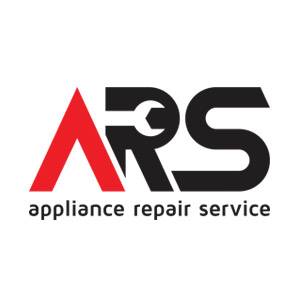
ARS Appliance Repair Service has been trusted across Toronto, Ottawa, and Southern Ontario for over a decade. Our licensed, manufacturer-authorized technicians specialize in repairing all major household and commercial appliances with genuine parts and warranty-backed service. From refrigerators and washers to ovens, dishwashers, and more, we restore appliances quickly, professionally, and correctly the first time, earning the confidence of homeowners and businesses throughout the region.
